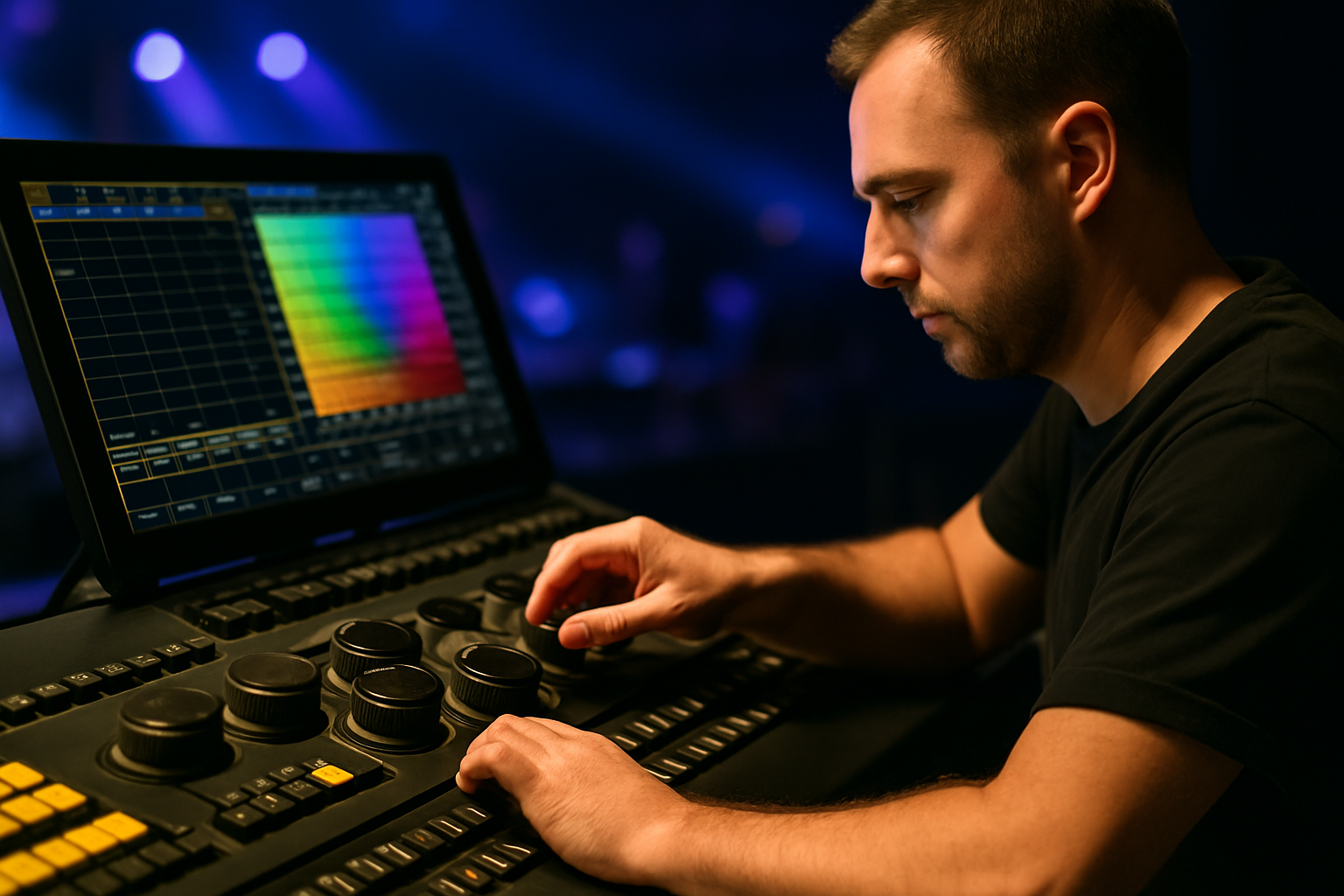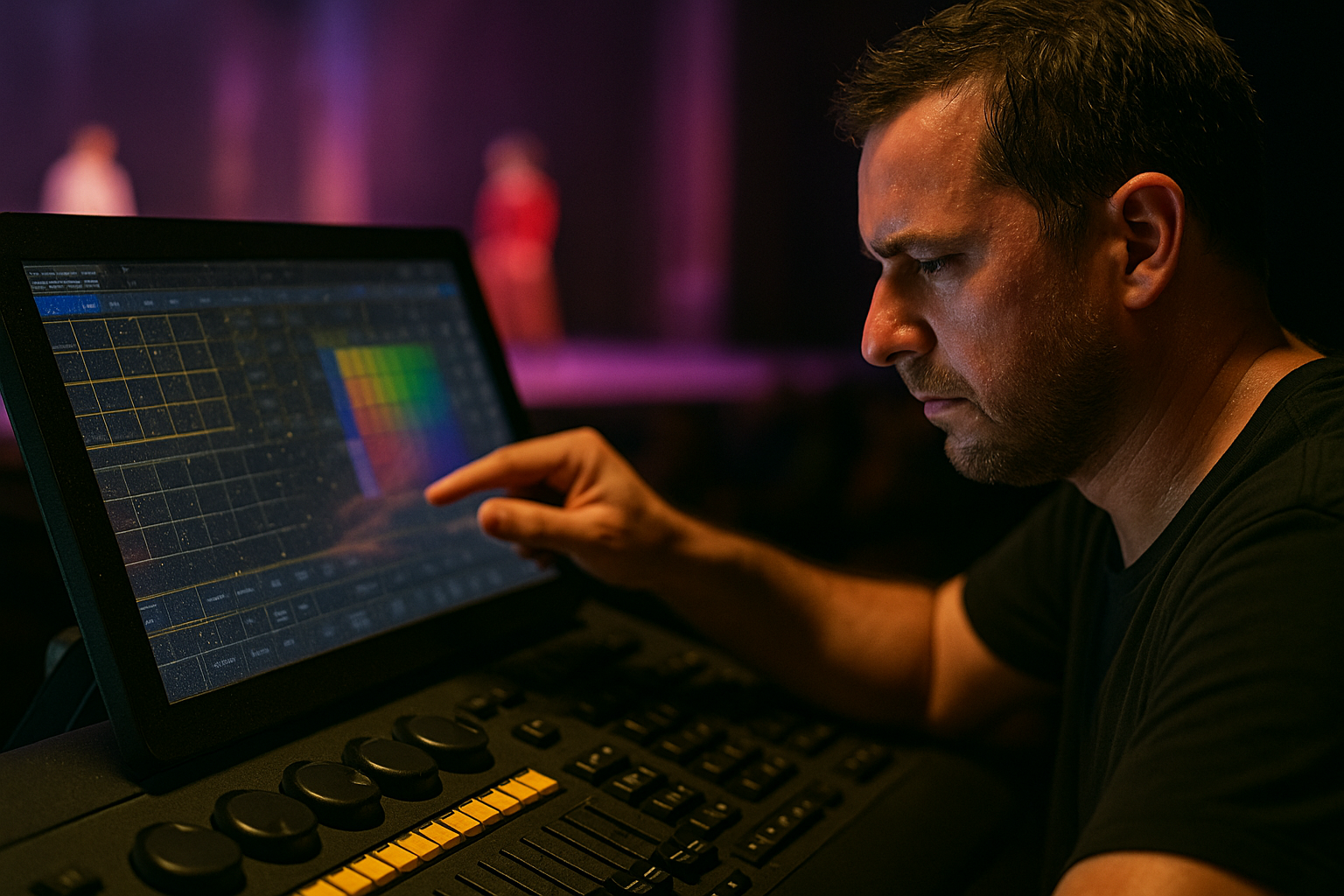The Evolution of Lighting and Media Control Interfaces
In the early days of stage lighting, control interfaces were analog—banks of faders, rotary knobs, and physical switches. As digital consoles emerged, they brought automation, memory, and complex cue structures. Now, modern lighting and media control desks often combine two primary input modalities: touchscreens and physical encoders (rotary knobs or wheels).
Both offer powerful interaction methods, but their strengths differ significantly, especially under live pressure. In fast-paced environments such as concerts, festivals, theater, and corporate events, understanding these differences can determine how responsive and accurate your lighting execution is.
Let’s explore how each interface performs in real-time show conditions.
Precision and Tactile Feedback: The Case for Encoders
Encoders excel in tactile accuracy. When controlling a parameter like pan, tilt, intensity, color temperature, or gobo index, an encoder provides:
Incremental control: One turn = one measurable change
Resistance and feel: Feedback from the knob makes fine-tuning more intuitive
Eyes-off operation: Operators can keep visual focus on the stage while adjusting parameters by muscle memory
In high-pressure shows, lighting technicians often depend on encoders for muscle memory-driven recall. Many consoles assign encoders to critical parameters like:
Fixture focus (pan/tilt)
Beam size or edge softness
RGB or CMY color values
Animation index or rotation speed
Encoders are particularly useful during cue refinement, when you need small changes without over-adjusting. Most encoders also support push-to-reset or push-to-access sub-menus, extending their functionality beyond simple rotation.

Speed and Visibility: The Advantage of Touchscreens
Touchscreens dominate in speed of access. You can view a large amount of information simultaneously, select multiple fixtures, and access pages or palettes with a tap. Their key advantages include:
Rapid fixture group selection
Custom layouts and matrix views
Immediate access to color pickers, effect libraries, or macros
Visual feedback for every parameter on screen
For creative workflows or busking (live improvisational control), touchscreens allow fast manipulation of effect generators, position presets, or live color chases. When paired with a well-designed UI, they become the command center of a modern console.
Many operators build custom touchscreen layouts for different scenes—grouped by fixture type, zone, or function. This visual interface allows quick execution of cues, without memorizing encoder positions or button combos.
Touch Under Pressure: Downsides in Live Settings
Despite their flexibility, touchscreens have notable drawbacks in live use:
Lack of tactile feedback: You must look at the screen to ensure correct touch
Glove incompatibility: In cold or costume-heavy environments, gloves may reduce touch accuracy
Sweat, haze, and dirt: Touchscreens can become unresponsive or smudged during intense shows
Lag under load: High-traffic screens or overtaxed processors may delay input response
These limitations make touchscreens less ideal for real-time fine parameter adjustment, such as slow dimming fades, subtle gobo shifts, or on-the-fly manual focus tweaks.
In fast live cue environments, a single missed touch can delay a fixture change or trigger the wrong playback. That’s why many pros default to encoders for critical timing cues and use touchscreens for layout and selection tasks.

Encoders in Improvisation and Repetition
One area where encoders shine is in repeatable gestures. A lighting operator can rehearse a fade-out, a color wheel sweep, or an intensity pulse—then recreate it manually using encoders with consistent timing every night.
This tactile skill-building is especially valuable when busking:
Live dimmer rolls on beat with music
Real-time zoom pulls during a guitar solo
Strobe intensity modulation during breakdowns
Encoders allow improvisational nuance without relying on macros or automated effects. In a way, they let the operator “play” the console like a musical instrument.
Some advanced consoles also support velocity-sensitive encoders, where spin speed affects adjustment rate—slow turns = fine control, fast turns = broad changes. This mimics analog response in a digital system.
Hybrid Workflows: Best of Both Worlds
The best consoles in live environments combine touchscreen and encoder control. They allow the operator to:
Select fixtures or groups on a screen
Adjust key attributes with encoders
Trigger effects via touch layout or physical fader
This hybrid interface structure is ideal for:
Busking shows with partial pre-programming
Festival stages where multiple operators rotate
Multi-discipline control (lights + video + lasers)
Operators often use touchscreens for navigation, encoders for precision, and faders for timing—creating a workflow that responds to both speed and subtlety.
When rigging custom show setups, it's common to:
Map fixture selections, effect libraries, and cues to touchscreen pages
Assign position, color, zoom, and intensity to fixed encoder banks
Leave timing and crossfades to playback faders or executors
System Redundancy and Hardware Reliability
Encoders tend to be more physically robust than touchscreens. In live events, consoles may be exposed to vibration, temperature swings, moisture, and power surges. If a touchscreen fails, operation can be severely limited—especially if all controls are routed through it.
Conversely, many high-end consoles feature redundant encoder modules, allowing the operator to control essential functions even if screen interaction is lost.
Touchscreens are more prone to failure under poor maintenance or environmental stress. Multi-touch surfaces may ghost, freeze, or misregister touches. For mission-critical shows (broadcast, arena, touring), relying solely on touch input is a risk.
That’s why touring consoles often emphasize encoder-first workflows, with touch as an optional enhancement.
Training and Learning Curve
New operators often find touchscreens more intuitive—especially those familiar with mobile or tablet interfaces. Visual interfaces reduce reliance on console-specific terminology or layout memorization.
However, mastering encoders provides:
Greater parameter awareness
Faster cue refinement
More accurate manual transitions
Training programs for professional lighting operation often include both interface types, emphasizing when and why each should be prioritized. Many operators develop their personal control “muscle memory”, using encoders for instinctive cues and touchscreens for setup.
READ MORE:





Blue Sea Lighting is an enterprise with rich experience in the integration of industry and trade in stage lighting and stage special effects related equipment. Its products include moving head lights, par lights, wall washer lights, logo gobo projector lights, power distributor, stage effects such as electronic fireworks machines, snow machines, smoke bubble machines, and related accessories such as light clamps.
Quick Links
For more questions subscribe to our email








